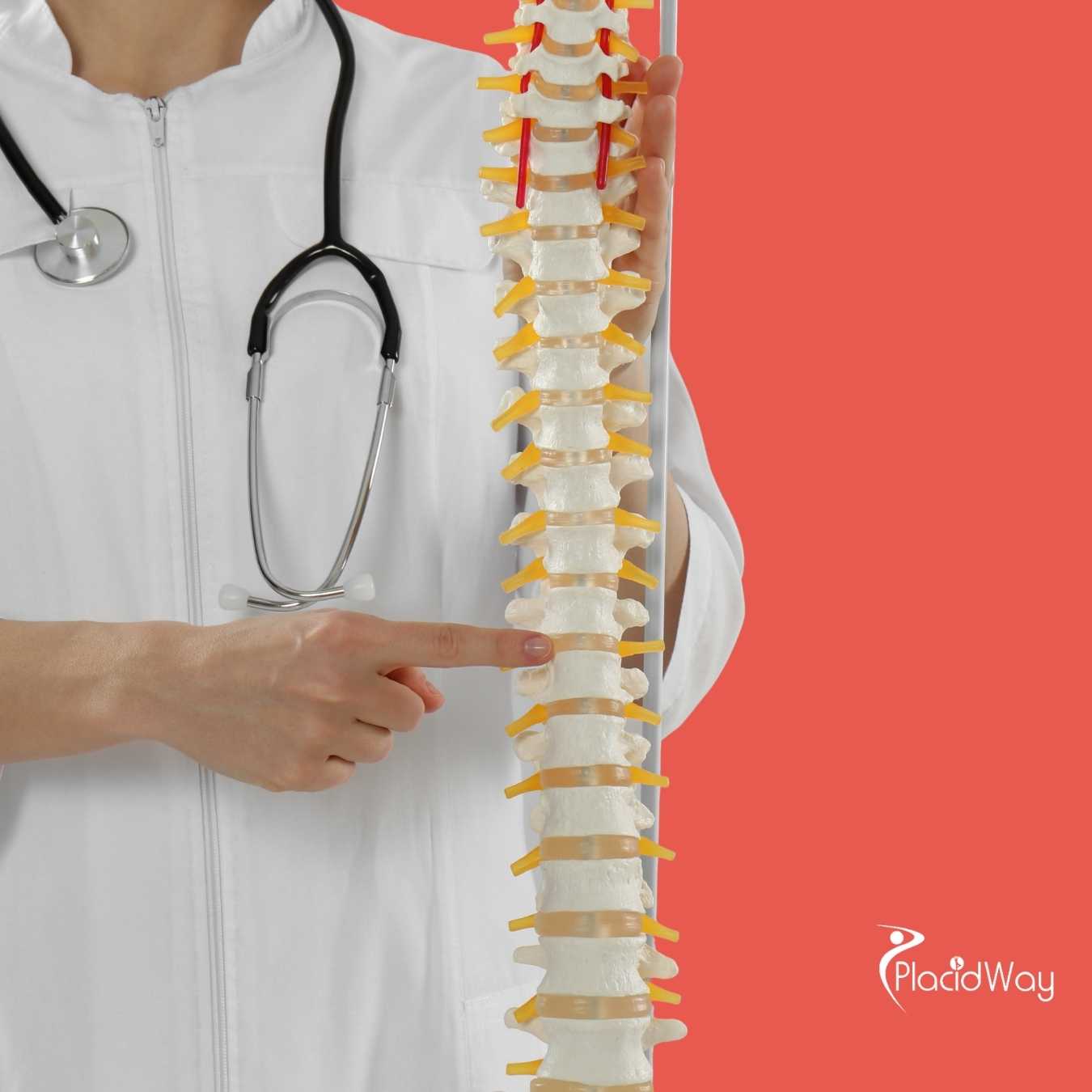Understanding the Effectiveness of Stem Cell Therapy for Ovarian Rejuvenation
Welcome to an in-depth look at stem cell therapy for ovarian rejuvenation, a groundbreaking area of reproductive medicine that offers new hope for women facing fertility challenges. Many are curious about its effectiveness and what it truly means for their chances of conception. While still evolving, early research and clinical observations indicate positive shifts in ovarian function for many patients. This innovative approach aims to revitalize ovaries that are diminished in reserve or showing signs of aging, using the body's own regenerative capabilities.
We understand you have many questions about this cutting-edge treatment, from how it works to who can benefit, and what the potential outcomes might be. Our goal here is to provide clear, comprehensive answers to demystify stem cell therapy for ovarian rejuvenation and help you understand its potential impact on fertility and overall ovarian health.
What is the overall success rate of stem cell therapy for ovarian rejuvenation?
The overall success rate of stem cell therapy for ovarian rejuvenation is a topic of intense interest and ongoing study. As a relatively new treatment, robust, large-scale clinical trials are still underway to provide definitive statistical data. However, preliminary findings from numerous studies and clinical applications are encouraging. Success can be measured in several ways:
- Improved Ovarian Markers: Many studies report significant improvements in markers like Anti-Müllerian Hormone (AMH), which indicates ovarian reserve, and a decrease in Follicle-Stimulating Hormone (FSH), suggesting improved ovarian function.
- Restored Menstrual Cycles: Women with premature ovarian insufficiency (POI) or irregular cycles often experience a return to regular menstruation.
- Increased Antral Follicle Count (AFC): An increase in the number of small follicles visible on ultrasound can indicate improved potential for egg development.
- Clinical Pregnancies: While direct pregnancy rates solely attributable to stem cell therapy for ovarian rejuvenation are still being compiled, there are numerous anecdotal reports and case studies of successful pregnancies following the treatment, sometimes after years of infertility.
It's important to remember that success can vary based on individual patient factors such as age, underlying conditions, and the specific stem cell protocol used. The field is rapidly advancing, and what we know today continues to evolve with new research.
How does stem cell therapy work for ovarian rejuvenation?
Stem cell therapy for ovarian rejuvenation operates on the principle of regeneration and repair. The fundamental idea is to introduce cells with regenerative properties into the ovaries to kickstart natural healing processes. Here’s a simplified breakdown:
Most commonly, Mesenchymal Stem Cells (MSCs) are used. These cells are multipotent, meaning they can differentiate into various cell types, and they possess strong immunomodulatory and anti-inflammatory properties. When injected into the ovaries, these stem cells don't necessarily turn into new egg cells directly, but rather, they create a more favorable environment for the existing ovarian cells and dormant follicles.
Their primary mechanisms of action include:
- Tissue Repair: Stem cells can help repair damaged ovarian tissue, which might be a factor in diminished ovarian reserve (DOR).
- Angiogenesis: They promote the formation of new blood vessels, improving blood flow and nutrient supply to the ovaries, which is crucial for follicle development.
- Growth Factor Secretion: Stem cells release a variety of growth factors and cytokines that stimulate the growth and maturation of existing ovarian follicles, and can potentially activate dormant primordial follicles.
- Anti-inflammatory Effects: By reducing inflammation, stem cells create a healthier microenvironment within the ovary, which can be beneficial for egg quality and overall ovarian function.
This combined effect aims to revitalize the ovaries, potentially leading to improved hormone production, regular ovulation, and enhanced fertility potential.
Who is a suitable candidate for ovarian rejuvenation with stem cells?
Identifying the right candidate is crucial for the potential success rate of stem cell therapy for ovarian rejuvenation. This therapy is generally considered for women who meet specific criteria, often after traditional fertility treatments have not yielded the desired results. Ideal candidates typically include:
- Women with Diminished Ovarian Reserve (DOR): This is characterized by low AMH levels and a low antral follicle count, indicating fewer eggs remaining.
- Women with Premature Ovarian Insufficiency (POI) or Primary Ovarian Insufficiency (POI): Previously known as premature ovarian failure, this condition involves the loss of normal ovarian function before age 40.
- Women experiencing peri-menopause symptoms: Who wish to improve their ovarian function and alleviate symptoms.
- Women over 35 with fertility challenges: Particularly those with age-related decline in egg quality or quantity, who are seeking alternatives to egg donation.
- Women with elevated FSH levels: Indicating that the brain is working harder to stimulate the ovaries, often a sign of reduced ovarian function.
A comprehensive medical evaluation, including hormonal blood tests (AMH, FSH, estradiol), pelvic ultrasounds, and a review of medical history, is essential to determine suitability and discuss realistic expectations for ovarian rejuvenation with stem cells.
Are there any risks or side effects associated with stem cell ovarian rejuvenation?
The safety profile of stem cell therapy for ovarian rejuvenation is a significant concern for prospective patients. When performed by experienced medical professionals using approved protocols, the procedure is generally considered safe with a low incidence of severe side effects. Most commonly, clinics utilize autologous stem cells (cells sourced from the patient's own body, like from bone marrow or adipose tissue), which significantly reduces the risk of immunological rejection.
Potential risks and side effects are typically mild and transient:
- Injection Site Discomfort: Patients might experience mild pain, bruising, or soreness at the site where stem cells are harvested (e.g., abdomen for fat-derived stem cells) or injected into the ovaries.
- Pelvic Discomfort: Some women report temporary cramping or a feeling of fullness in the pelvic area after the ovarian injection.
- Infection: As with any invasive procedure, there is a very small risk of infection, which is minimized by sterile techniques.
- Bleeding: Slight bleeding at the injection sites is possible but usually resolves quickly.
Serious complications are rare. It is vital to choose a reputable clinic with a strong safety record and adhere to all pre and post-procedure instructions to mitigate risks. Open communication with your doctor about any concerns is always recommended.
What is the cost of stem cell therapy for ovarian rejuvenation?
The cost of stem cell therapy for ovarian rejuvenation is a significant factor for many individuals considering this advanced treatment. Because it is an innovative and often personalized procedure, the price can fluctuate considerably based on several elements. These factors include:
- Geographic Location: The country and even the city where the clinic is located can greatly impact pricing. Countries like Turkey, Mexico, Thailand, and other popular medical tourism destinations often offer more competitive pricing compared to Western Europe or North America.
- Clinic Reputation and Expertise: Highly specialized clinics with extensive experience, state-of-the-art facilities, and renowned specialists may charge more.
- Type of Stem Cells Used: Whether adipose-derived stem cells, bone marrow-derived stem cells, or other types are utilized can influence the cost, as different harvesting and processing methods are involved.
- Number of Treatment Cycles: Some protocols may involve multiple injections or cycles, which will increase the overall cost.
- Inclusions in the Package: Some clinics offer all-inclusive packages that cover initial consultations, diagnostic tests, the procedure itself, follow-up care, and sometimes even accommodation or concierge services, especially for international patients.
Given the variability, it is essential to request a detailed quote from clinics and understand exactly what is included in the price. Patients often travel abroad for stem cell therapy for ovarian rejuvenation to find more affordable options without compromising on the quality of care.
How long does it take to see results after ovarian rejuvenation with stem cells?
The timeline for observing results after stem cell therapy for ovarian rejuvenation can vary from person to person, as biological responses are unique. It's not an immediate fix, as the regenerative processes stimulated by stem cells take time. Generally, patients can anticipate the following:
- Early Changes (1-3 months): Some women might notice subtle improvements in their general well-being or a slight change in hormonal symptoms. However, significant measurable changes in ovarian markers are less common in this very early phase.
- Noticeable Improvements (3-6 months): This is typically when many patients begin to see more discernible results. Improvements in hormonal levels (like AMH increasing or FSH decreasing) might be detected through blood tests. Women experiencing irregular periods might report more regular cycles, and some may see an increase in antral follicle count on ultrasound.
- Optimal Results (6-12 months and beyond): The full regenerative effects of stem cells can take several months to manifest completely. The ovaries are complex organs, and the rebuilding of tissue, improvement in blood supply, and activation of follicles are gradual processes. Continued monitoring and follow-up are essential to track long-term progress.
It's important to maintain realistic expectations and understand that patience is key. The goal of stem cell therapy for ovarian rejuvenation is to support the body's natural capacity for healing and regeneration, which is not an overnight process.
Is stem cell ovarian rejuvenation covered by insurance?
For individuals considering stem cell therapy for ovarian rejuvenation, one of the most common questions revolves around insurance coverage. Unfortunately, the general answer is that most health insurance providers do not cover this treatment at present. There are several reasons for this:
- Experimental Status: While promising, stem cell therapy for ovarian rejuvenation is still largely classified as an experimental or investigational treatment by many regulatory bodies and insurance companies. This means it hasn't yet gone through the extensive, large-scale clinical trials required for broad approval and inclusion in standard medical practice guidelines.
- Lack of Universal Protocols: There isn't a single, universally standardized protocol for ovarian rejuvenation using stem cells, which makes it challenging for insurance companies to assess and approve.
- Fertility Treatment Exclusions: Many insurance plans have limited or no coverage for fertility treatments in general, and innovative procedures like stem cell therapy for ovarian rejuvenation often fall under these exclusions.
As a result, patients should prepare for the likelihood of paying for the entire cost of the treatment themselves. It is always advisable to contact your specific insurance provider to understand your policy's limitations regarding fertility treatments and experimental therapies, though it's uncommon to find coverage for this particular procedure.
What should I consider when choosing a clinic for ovarian rejuvenation abroad?
Choosing a clinic for ovarian rejuvenation abroad requires careful consideration to ensure safety, quality, and effective treatment. Many patients opt for international clinics due to cost-effectiveness, specialized expertise, or faster access to treatment. Here's what to keep in mind:
- Accreditation and Certification: Look for clinics accredited by international bodies (e.g., JCI, ISO) or reputable national health organizations. This indicates adherence to high standards of patient care and safety.
- Doctor's Expertise and Experience: Research the qualifications, experience, and specialization of the doctors performing the stem cell therapy for ovarian rejuvenation. How many procedures have they performed? What are their success rates?
- Transparency in Pricing: Ensure the clinic provides a clear, itemized breakdown of costs, including all consultations, procedures, medications, and follow-up care. Avoid clinics with hidden fees.
- Patient Testimonials and Reviews: Seek out genuine reviews and testimonials from previous international patients. These can offer insights into the patient experience, clinic communication, and treatment outcomes.
- Communication and Language Support: Confirm that the clinic has staff who can communicate effectively in your language to avoid misunderstandings during such a critical medical journey.
- Comprehensive Pre and Post-Treatment Care: Understand the full treatment plan, including initial diagnostics, the procedure itself, and ongoing follow-up. A good clinic will provide clear instructions for before and after your treatment, including remote follow-up options.
- Travel and Logistics Support: Some clinics or medical tourism facilitators offer assistance with travel arrangements, accommodation, and local transportation, which can be invaluable for international patients.
Thorough research and due diligence are paramount to a positive experience with ovarian rejuvenation abroad.
What are the ethical considerations surrounding ovarian rejuvenation therapy?
As a pioneering field, stem cell therapy for ovarian rejuvenation raises several important ethical considerations that medical professionals, patients, and regulatory bodies must address. These considerations are vital to ensure responsible development and application of the therapy:
- Informed Consent: It is crucial that patients fully understand the experimental nature of stem cell therapy for ovarian rejuvenation, including its potential benefits, risks, and the fact that definitive long-term success rates are still being established. Consent must be truly informed, not based on exaggerated claims or unrealistic expectations.
- Managing Patient Expectations: Given the emotional vulnerability of individuals seeking fertility treatments, clinics have an ethical responsibility to communicate realistic outcomes and avoid offering false hope. The focus should be on evidence-based potential improvements, not guaranteed results.
- Preventing Exploitation: The high demand for fertility solutions can sometimes lead to the proliferation of clinics offering unproven or overly expensive treatments. Ethical practice demands transparency and a commitment to patient welfare over financial gain.
- Research Integrity: Ethical research practices involve proper study design, transparent reporting of results (both positive and negative), and adherence to ethical guidelines for human subjects research. This builds trust and moves the field forward responsibly.
- Access and Equity: As an expensive and specialized treatment, ethical discussions also revolve around ensuring equitable access to such potentially life-changing therapies once they are fully validated, without creating significant health disparities.
These ethical frameworks guide the responsible progression of ovarian rejuvenation therapy, ensuring patient safety and promoting legitimate scientific advancement.
What is the typical process for stem cell ovarian rejuvenation for international patients?
For international patients considering stem cell therapy for ovarian rejuvenation, the process is typically structured to accommodate their travel and logistical needs. While specific steps can vary between clinics, a general outline includes:
| Step | Description |
|---|---|
| 1. Initial Inquiry & Consultation | Contacting the clinic or a medical tourism facilitator like PlacidWay. Sharing medical history, diagnostic reports (AMH, FSH, ultrasound), and discussing suitability via virtual consultation. |
| 2. Treatment Plan & Quote | The medical team reviews your case and proposes a personalized ovarian rejuvenation treatment plan, including the type of stem cells, number of cycles, and a detailed cost estimate. |
| 3. Travel & Logistics Planning | Once you accept the plan, the clinic or facilitator assists with travel arrangements, accommodation, airport transfers, and visa requirements if needed. |
| 4. On-site Arrival & Pre-treatment | Upon arrival, you'll have an in-person consultation, undergo final diagnostic tests, and prepare for the procedure. |
| 5. Stem Cell Harvesting & Rejuvenation Procedure | Stem cells are harvested (e.g., from fat or bone marrow), processed, and then injected into your ovaries, typically under ultrasound guidance. |
| 6. Post-Procedure Care & Recovery | Short recovery period at the clinic/hotel, with instructions for aftercare and any necessary medications. |
| 7. Return Home & Follow-up | You return home with a follow-up plan, which often includes periodic blood tests and virtual consultations to monitor progress and the success rate of stem cell therapy for ovarian rejuvenation. |
This structured approach helps ensure a smooth and organized experience for patients traveling internationally for ovarian rejuvenation. Considering stem cell therapy for ovarian rejuvenation or exploring other advanced healthcare options globally? PlacidWay connects you with world-class clinics and experienced specialists for your unique health journey. Visit PlacidWay today to learn more and explore your possibilities.

.png)

.png)


-Package-in-Kuala-Lumpur,-Malaysia-by-FirstCell.jpg)






Share this listing